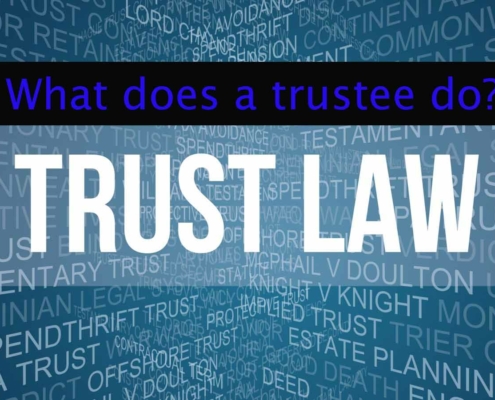The Fundamentals of Partnerships
Before forming a partnership, make sure to select your would-be partners carefully. Entering into a partnership with business partners you know and trust can be the difference between a new company that exceeds expectations and one that is riddled with problems and never gets off the ground. Partnerships are generally easy to create, but the key is to not get carried away and forget to thoroughly vet your partners. Also, we recommend signing a business agreement or some other type of official, documented agreement that will serve to guide the behavior of the involved parties and, therefore, the entire company.
If there is no written agreement, the partners may try to follow the partnership’s specific rules, but it is much easier to have a document to refer back to, one that all of the partners created, agreed upon, and signed. Since all involved business partners share the exact extent of authority, and since the partnership is therefore bound together by both debt obligations and partners’ business dealings, it is crucial to choose business partners wisely.
It is worth noting that business partnerships are not for everyone, and just because you are friends or acquaintances with someone, that does not mean that you will make good business partners. Resist the urge to speed through the step in which you choose your partners, even if you are excited to provide your business idea with a platform and begin creating revenue. Excellent business partners complement each other with their talents and skills and create a union that is greater than the sum of its parts. That is why you should form a partnership instead of simply for convenience.
Trying Out Joint Ventures
Are joint ventures also business partnerships? It is tempting to think of joint ventures in this manner, and many of us do, but there are fundamental differences between these different systems. For example, joint ventures, which consist of two or more companies who band together to support a unique, specific business project, are usually devoted to one standardly defined aim. However, partnerships are usually based on a long-term outlook and are fueled by multiple objectives and ambitions.
Also, joint ventures usually feature two or more parties that are businesses, not individual people. These businesses are focused on one specific outcome, and they have decided to strategically get together in order to fund a new pursuit, be it research, products, or services. Sometimes, these ventures are based on the unique combination of value each company brings to the collaboration, and joint ventures can be useful in breaking into new markets.
Unlike partnerships, joint ventures find order and structure in their contract. This shared contract allows members to identify both their duties and their liabilities. In a joint venture, the parties can choose whichever legal structure they would prefer, be it a corporation or a partnership. Once a joint venture accomplishes its goal, it usually is dissolved as the parties go on to other pursuits. Ideally, the parties are satisfied and happy that they began their joint venture business journey.
The Basics of Partnership Agreements
No matter the structure that is chosen, one essential aspect of all partnerships is a signed operating agreement. Contracts such as this are necessary to help protect partnerships from disputes. If a dispute, for example, comes down to one partner’s claim over another’s, it is easy to reference the contract to see who is right and who is wrong. Contracts usually include, but are not limited to:
- A concise explanation of each partner’s duties
- The preferred manner of distributing profits
- The powers of the partners to conduct business decisions
- A clause for dispute resolution
- An agreement for a possible buyout
- An exit strategy: for example, this may be a detailed description of how partners can withdraw from the company and can also dictate how much notice is needed for leaving the business. Also, this part of the contract can detail the way in which the partnership would handle an unfortunate circumstance such as a partner dying, retiring, or leaving the company for another reason.
- The way in which to bring in a new partner for the business
- Other issues that may be important to your unique business.
Also called a partnership agreement, this document is necessary for all partnerships. Therefore, the operating agreement creates and establishes rules for the business that would be up to the state’s default guidelines without it. When an operating agreement is written in the right way, it should enable the business partners to operate their companies according to their preferences, and that can undoubtedly help the business. Also, a state’s default rules sometimes do not suit a particular business, and that is why a contract is so important.
We recommend taking your time in creating the contract and making sure that all of the partners have a chance to contribute to it and read it over before it is finalized. Great partnerships begin and end with excellent, thorough, and inclusive contracts, so do not overlook or skimp on this step.
Explaining Liabilities to Creditors
Did you know that business owners are personally responsible for the entirety of the partnership’s financial obligations and debts? This means that, unfortunately, if it comes down to it, creditors and other agencies can pursue assets belonging to partners to settle their debts and attain the money the creditors are owed. In this scenario, creditors can seek out the involved business partners’ cars, homes, and even bank accounts. Essentially, this is the most potentially damaging trait of partnerships and also what many see as its main drawback.
Now, for limited partners who have only invested money into the partnership, and that is it, there can occur an exception to this type of personal liability. Limited partners can file a special certificate that stipulates their limited role and must include the names of all of the partners. Limited partners are still allowed to be personally sued by creditors if this document is not created and signed, even if the limited partners are only seen as investors and other partners who run the company. Therefore, this limited partnership certificate is essential.
Lastly, any debt owed by the business to creditors can be collected by one single partner. This is what is meant by the phrase “joint and several liabilities,” which implies that each business partner is individually responsible for the entire debt. Why is this enforced? This “joint and several liabilities” simply prevents partners from forcing each other to pay the whole debt. Another important note: if one partner does pay the entirety of the owed debt, they can and should sue the other partners in order to only pay for part of it and collect their fair share. For more questions about these circumstances, it is wise to contact a business lawyer.
Essential Duties to Partners
Every legal relationship comes with responsibilities, correct? In this case, the legal union with your business partners means that you owe them specific duties. These may include but are not limited to:
- No salary and equal control unless there is a different agreement in place
- Loyalty to the other partners as well as fiduciary duty
- Profit-sharing with the other partners is equal in nature unless a prior, written, and signed agreement has already established a different set of circumstances.
What is meant explicitly by a duty of loyalty and/or a fiduciary duty to one’s partners? This implies that all business partners involved in the small business expect each other to act in the best interests and intentions of the partnership. As opposed to focusing on helping only themselves, partners must focus on the outcomes of the partnership, not their own accounts or wallets. Additionally, partners can be sued by the partnership if financial wrongdoing is suspected and proven, and business partners also have to be able to provide financial accounting for all of the actions they have taken. While these circumstances are somewhat rare, and we hope that your new partnership does not have to deal with lawsuits or financial disagreements, we suggest keeping careful, thorough records of each business deal.
How Partnerships are Taxed
One of the advantages of partnerships is that they are able to utilize flow-through taxation. What is flow-through or pass-through taxation? This means that the partnership does not have to pay taxes itself. Similar to a sole proprietorship, the partners themselves pay taxes on their own unique share of the profits, using their annual personal income tax returns. How is this possible? It is simple. The business partnership is not a specific corporate entity, like an LLC, so the taxes only need to be paid through the partners’ taxes. But, of course, the partnership still provides tax information to the Internal Revenue Service.
Sometimes, companies decide to be a “business partnership” to take advantage of flow-through taxation. While forming a corporation is popular, corporations enjoy other advantages; they something must pay double taxation. Double taxation occurs when a corporation pays its corporate taxes, and then its shareholders have to also pay taxes. Because this idea of double taxation can hurt revenue, more and more companies have decided to become business partnerships.


































